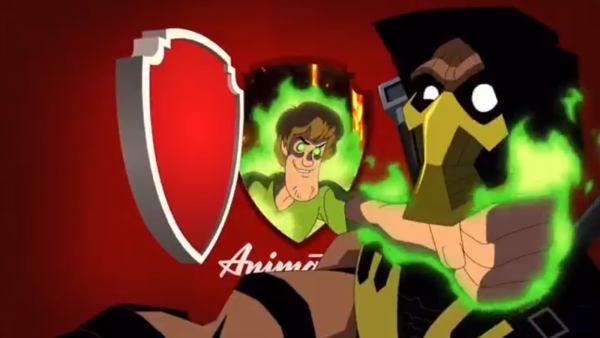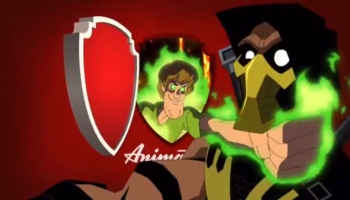
It’s an oft-repeated mantra in certain circles (and I’m sure it’s come up in this column before), but game development is hard. Projects morph and mutate as they wind their way through development, and many never make it out the other side. So for this edition of Bite-Sized Game History, let’s look at a few things that disappeared over the years, but still live on in their own way…
![]() You can find a lot of dedicated video game historians on Twitter, and in 280 characters or less, they always manage to unearth some amazing artifacts. Bite-Sized Game History aims to collect some of the best stuff I find on the social media platform.
You can find a lot of dedicated video game historians on Twitter, and in 280 characters or less, they always manage to unearth some amazing artifacts. Bite-Sized Game History aims to collect some of the best stuff I find on the social media platform.
William Higinbotham was a physicist at the Brookhaven National Laboratory in New York, and he famously used an analog computer and an oscilloscope to create Tennis For Two, one of the first video games ever produced, for a public exhibition in 1958. Higinbotham referred to his creation as Computer Tennis and it was an instant hit with visitors. So much so, that it was brought back in expanded form for the laboratory’s open house the following year before being dismantled sometime in 1960.
While the original hardware used to exhibit Tennis For Two has been lost to history, the Retrogame Deconstruction Zone has created a simulation of Higinbotham’s game to give today’s players a chance to try it out:
Tennis for two, anyone?
I just published a simulator of the original 1958 game, including sound effects, realistic-looking graphics, and even a CPU player to face off against.
Try it out here:https://t.co/ZWSnR5mJGQ pic.twitter.com/2FyjXynh6I
— RetroAnalyst Prime (@MrVGBrow) August 5, 2021
Yet another game adaptation of the Power Rangers doesn’t carry the same historical significance as something like Tennis For Two, but we did recently learn about Power Rangers: Project Nomad, a (now-canceled) game concept from Saban that would have let players control dozens of different Rangers from across the franchise in a co-op open world brawler.
Jason Bischoff, a former executive at Saban, opened up about the game (which would have been heavily inspired by the Batman: Arkham franchise) and showed off some spectacular concept art in this tweet thread:
Let’s talk about the 2016 AAA #powerrangers game that never was: PROJECT NOMAD! ⚡️ #powerdown 1/6
— Jason Bischoff (@shadowpiper) August 6, 2021
[Tweet Removed – View at Internet Archive]
And speaking of things that were never meant to be, we come to Shaggy’s long-awaited debut in the Mortal Kombat franchise.
Don’t worry, I can explain (but it’s going to get weird first).
It all started in 2011, when Warner Bros. released Scooby-Doo! Legend of the Phantosaur, the sixteenth animated movie to star Fred, Velma, Daphne, Shaggy, and their canine companion. In addition to serving up the franchise’s well-honed concoction of shenanigans and hijinks (hijinkies?), the movie also included a short scene of Shaggy singlehandedly beating up a gang of bikers. Six years later, the Internet took this rather uneventful moment (Shaggy was always pummeling “ghosts” in the original series) and turned it into a meme.
The presentation of the memed images and videos was always the same… Shaggy would be depicted facing off against some of pop culture’s greatest fighters… and then he would win.
This tidal wave of fanart even managed to engulf Matthew Lillard, who has portrayed Shaggy in live-action and animation since 2002 (including Legend of the Phantosaur). In one of the most popular images, the actor “reveals” that he’s able to deliver such a good performance as everyone’s favorite ghostbusting slacker because he was possessed by Shaggy’s spirit during filming.
Naturally, this all came to a head in 2019 with a fan campaign asking NetherRealm Studios to add Scooby-Doo’s pal to Mortal Kombat 11 as a guest fighter. It didn’t work out, but someone at Warner Bros. Animation was definitely paying attention, which is why the opening credits from the recently-released Mortal Kombat Legends: Battle of the Realms features a short scene of Shaggy performing a Fatality on Scorpion:
HOLY KRAP! You people were right all along! ?#ShaggyKonfirmed pic.twitter.com/1qrUibF1Rc
— Ed Boon (@noobde) August 31, 2021
Thanks to the Retrogame Deconstruction Zone, Jason Bischoff, and Ed Boon for the small bits of knowledge featured in this edition of Bite-Sized Game History. And be sure to follow me on Twitter to see my next great find.

